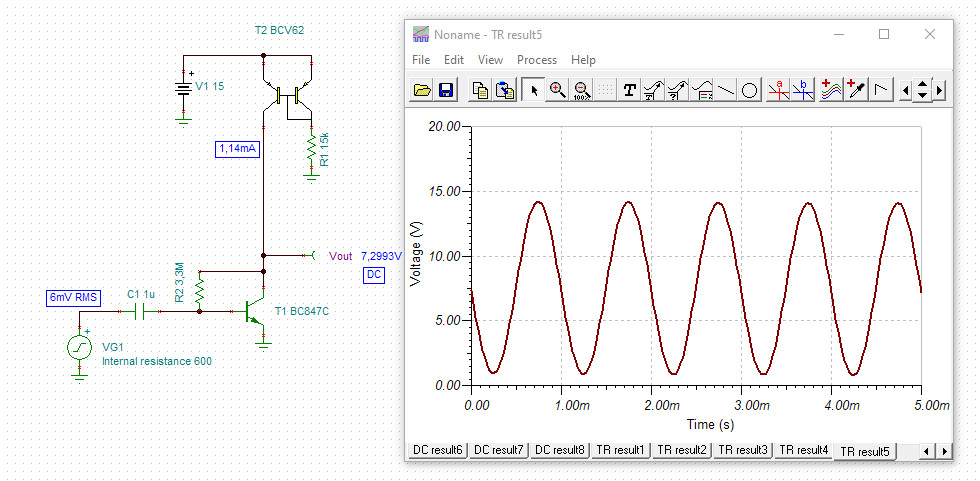I'm experimenting with/learning about the use of active-loads with a common emitter and I've hit a wall. When using a resistor in the collector it makes sense how the output voltage bias can be set to somewhere sensible such as half way between VCC and ground.
When using an active load however, how is this typically achieved so that you can retain the high gain that comes with an active load?
I've put together this quick circuit to play with and it shows that the Vout is biased down at 123mV. Can this be brought up to say 5V without losing all the gain?
Many Thanks


